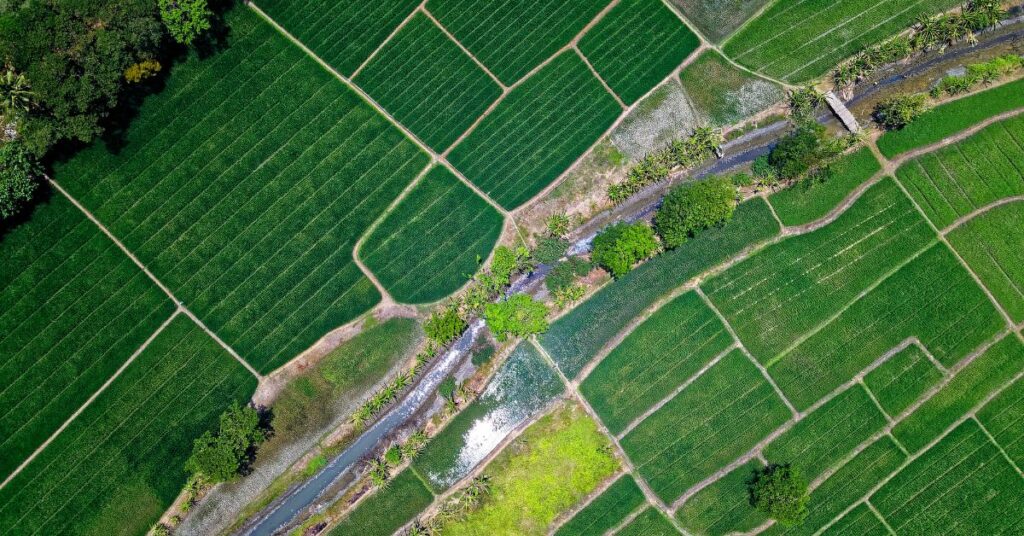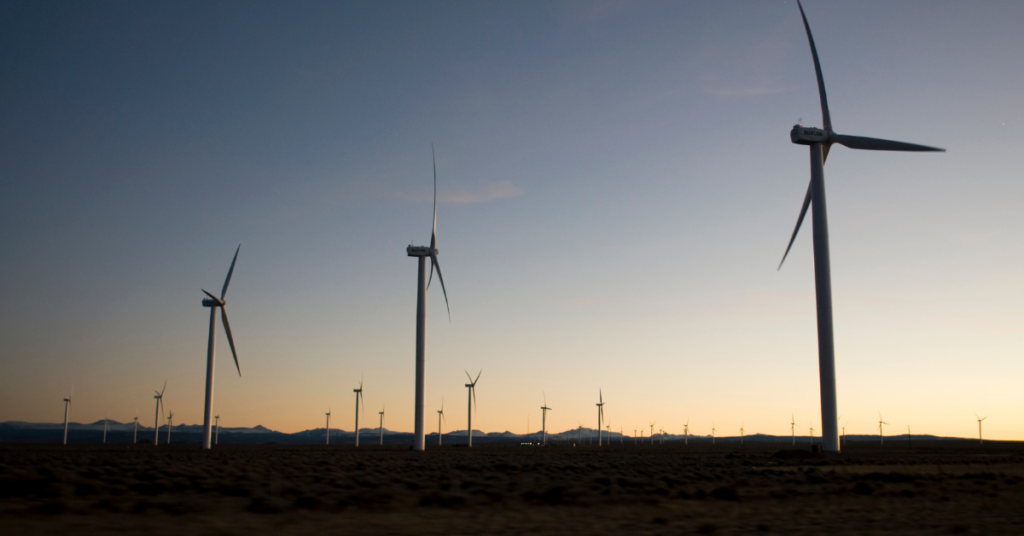
Vertical farming is cultivating crops indoors, specifically leafy greens and herbs, by arranging them in vertical layers instead of the conventional horizontal approach used in traditional agriculture.
To optimize crop yield, this novel food production method utilizes advanced technologies, including LED lighting, closed-loop water recycling, and precise climate control.
The increasing global population necessitates the urgency for sustainable food systems. Sustainable agriculture seeks a harmonious equilibrium among economic viability, environmental responsibility, and public health.
This blog examines sustainable and vertical farming, discussing their advantages and potential for future sustainable production systems.
What is Sustainable Farming?
Sustainable farming, or sustainable agriculture, encompasses farming practices that consider ecological cycles, microorganism relationships, and the environment.
This approach advocates for economically viable and environmentally responsible methods and practices prioritizing public health.
Sustainable farming encompasses more than profit maximization, emphasizing the prudent and efficient utilization of non-renewable resources in agricultural practices.
By prioritizing sustainability, farmers can simultaneously enhance the quality of their livelihoods, mitigate their contributions to climate change, and cultivate nutritious and healthy food.
Sustainable Agriculture Practices
A sustainable farming system encompasses various agricultural practices. This system promotes social and economic equity for future generations of farmers. It emphasizes fair treatment of workers, racial equality, universal access to healthy food, and prioritization of people and communities over corporate interests.
By adopting sustainable farming practices and embracing a harmonious relationship with nature, farms can achieve high productivity and profitability while minimizing adverse environmental effects.
Sustainable food systems encompass:
- Developing resilience to extreme weather events.
- Biodiversity has increased.
- Mitigate soil degradation and restore soil fertility.
- Minimizing water and air pollution.
- Sustainable water management
Implementing sustainable practices can mitigate or potentially reverse environmental degradation, addressing various challenges, including disease, hunger, displacement, and conflict.
Sustaining farmland health, preserving natural resources, and securing the global food system are crucial for the well-being of both rural and urban communities.
Vertical Farming
Vertical farming has multiple advantages over traditional farming regarding its environmental impact. This approach utilizes reduced land usage and innovative crop production techniques, contributing to decreased greenhouse gas emissions. Besides, vertical farming eliminates the need for harmful pesticides, herbicides, and fungicides.
There are only so many universally optimal choices for sustainable agriculture. Diverse and complex agricultural systems resembling natural ecosystems are typically more sustainable and productive.
Agriculture must evolve to ensure sustainable production in the future. Fortunately, existing solutions, such as vertical farming, can be easily incorporated into our current food systems.
Vertical farming is not intended to supplant conventional farmers or established agricultural technologies such as greenhouses. Instead, its purpose is to enhance them, highlighting the strengths of each approach.
The demand for sustainable agriculture has risen due to global population growth. Conventional agricultural practices need to be improved to fulfill the population’s current needs. Vertical farming is a promising technology that can effectively tackle this problem.
This blog post will analyze the potential, benefits, and sustainability of vertical farming. This post aims to enhance understanding of the potential of vertical farming in addressing global food security.
Advantage of Vertical Farming
Vertical farming is a promising food production method with numerous potential advantages. Utilizing unused vertical space can enhance production capabilities and decrease the land area needed for conventional farming.
Furthermore, it has the potential to enhance crop growth by creating favorable conditions, resulting in energy conservation through efficient water utilization. The reduced space requirements of this delivery method make it more efficient in providing food to customers, particularly in urban areas.
In addition, vertical farming offers higher yields with significantly reduced water consumption compared to conventional farming methods.
It protects crops against pests and natural threats. Vertical farms are gaining recognition as a feasible solution for urban areas to obtain locally sourced fresh produce due to their sustainability benefits compared to conventional methods.
They can cultivate various crops, including vegetables, fruits, herbs, and fish or livestock. In addition, they facilitate multiple harvests annually, thereby enhancing food security.
Vertical farms have the potential to provide several advantages compared to conventional farming methods.
These include reduced water usage, enhanced crop protection against pests, decreased space requirements for production, the potential for multiple harvests per year, the provision of locally sourced fresh produce in urban areas, lower energy input requirements, and the ability to cultivate a diverse range of crops beyond traditional fruits and vegetables.
Vertical farms have the potential to revolutionize food production due to their numerous advantages, making them crucial elements of forward-thinking agricultural strategies.
how vertical farming can address food security issues and Reduce Agricultural Waste?
Vertical farming is a sustainable agricultural technique that has the potential to enhance food production, minimize waste, and conserve resources.
Vertical farming involves cultivating crops in stacked layers, typically within controlled environments like greenhouses or warehouses.
Vertical farming, through hydroponic systems, can decrease reliance on traditional irrigation methods and effectively preserve water and land resources, leading to increased agricultural productivity.
Robotics and automation contribute to reducing the labor-intensive nature of traditional farming practices. Vertical farms enhance food safety by eliminating hazardous pesticides and chemicals.
Vertical farming offers the potential for higher crop yields compared to traditional methods, primarily due to the proximity of crops. This proximity reduces transportation costs, thereby increasing local access to fresh produce.
Vertical farming has a smaller land and water footprint compared to traditional farming. Moreover, urban agriculture can yield diverse crops throughout the year, reducing reliance on pesticides and fertilizers and simultaneously addressing the increasing global food demands.
Vertical farms enhance food production efficiency by optimizing space utilization and reducing energy consumption in crop production cycles.
Technological advancements have made these operations commercially viable by ensuring efficiency throughout the process, from seed planting to crop harvesting and distribution, while minimizing environmental impact.
The United States has over 2,000 vertical farms, showcasing their capacity to enhance global food production efficiency and minimize agricultural waste.
Achieving Sustainability in Vertical Farming
Vertical farming is an innovative agricultural system that has the potential to establish a new industry, promoting sustainability, economic growth, and job opportunities.
Vertical farming techniques use less land and water than traditional agriculture methods, alleviating the strain on biodiversity and natural resources.
Vertical farms utilize self-sufficient indoor lighting systems, eliminating the need for fossil fuels or external energy sources. Additionally, these systems have the advantage of local production, reducing greenhouse gas emissions.
Vertical farms have the potential to mitigate food waste, enhance food security, and encourage healthier dietary choices. Advanced technologies, including automated sensors, soil fertility management, and irrigation and hydroponic technology, are essential for the success of vertical farming.
Large-scale investments in vertical farming have potential environmental impacts, although it is generally considered a more environmentally friendly alternative to conventional agricultural practices. Vertical farming offers potential benefits such as sustainability, economic growth, employment opportunities, and overall future improvement.
Improve the efficiency of water use and plant nutrition in vertical farms. The expanding global population is driving the demand for food. Vertical agriculture is an emerging agricultural technique that can significantly enhance crop yields, optimize plant nutrition, and improve water efficiency.
This advanced technology has the potential to transform food production and mitigate risks linked to conventional farming practices.
Vertical farming offers significant environmental benefits, such as a potential reduction in water consumption by as much as 95%.
Vertical Farms enhance agricultural productivity and enable stringent environmental regulation by implementing efficient irrigation and advanced hydroponic systems.
This farming method also decreases reliance on pesticides and herbicides, contributing to environmental preservation.
The Potential for vertical farming in urban areas
Vertical agriculture has significant potential for various applications in urban environments, provided it is effectively implemented. Vertical farming is a space-efficient method of agriculture that enables farmers to optimize their yield while minimizing resource consumption.
Additionally, it promotes sustainability by enhancing cropping intensity, yield, and food security through more efficient utilization of limited resources such as land, water, and fertilizers, in contrast to conventional farming techniques.
Vertical agriculture is a viable method for enhancing crop productivity, optimizing plant nourishment, and conserving water resources. These factors are crucial prerequisites for achieving a sustainable future.
This emerging technology offers potential benefits such as cost reduction, increased production efficiency, risk mitigation, enhanced environmental management, improved crop quality, better pest control, and reduced chemical usage. It holds significant promise for the future of agriculture, necessitating further exploration to ensure the widespread availability of healthy and nutritious food for future generations.
editor’s desk
Vertical farming is a potentially viable and sustainable approach to address the increasing demands of our expanding global population.
Vertical farming efficiently maximizes unused vertical space, conserves water and energy resources, enables multiple harvests annually, and offers locally sourced fresh produce in urban areas.
Investing in advanced technologies, such as automated sensors, soil fertility management, and efficient irrigation systems, can enhance agricultural efficiency by reducing waste and increasing food production.
Individuals can establish a novel industry that promotes sustainability and guarantees long-term access to nutritious food for future generations.


The author has a specialization in domains like environmental science and sustainable energy. Being in the writing and editing industry for half a decade, he has produced numerous exceptional academic content and blog posts in multiple popular platforms.
At BleedGreen, he will share his solution-oriented thoughts to tackle sensitive issues like climate change, the greenhouse effect, and deforestation.




